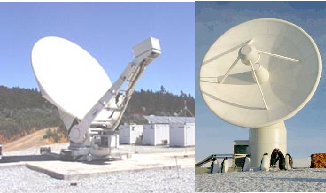TANAMI - Project Description

Observations:
TANAMI observations are made with the Australian/South-African Long Baseline Array (LBA+), using the antennas at Parkes (64m), ATCA (5x22m), Mopra (22m), Hobart (26m), Ceduna (30m) and the associated antennas Tidbinbilla (DSN 70m or 34m), the IVS antennas TIGO (6m) and O'Higgins (9m) and Hartebeesthoek (26m). In recent years, our array is frequently augmented by Warkworth (30m), Katherine (12m), Yarragadee (12m), and a single antenna from ASKAP (12m). We conduct snapshot observations at 8.4GHz and 22GHz with a typical ~60min integration time per frequency observed in typically 8 scans distributed over 12 hours. Target sources are monitored every ~4 months with a typical angular resolution of 1.5 x 0.7 mas.

Multifrequency blazar SED studies will play an important role in the Fermi era: The TANAMI program is
supported by an approved ATCA program for flux density monitoring
between 6cm and 7mm, with largely overlapping target lists (team
contact Phil Edwards, Philip.Edwards@csiro.au).
Simultaneous to TANAMI and Fermi
observations, Swift UVOT/XRT
observations are collecting UV to X-ray broadband source spectra (PI M.
Kadler, Matthias.Kadler@sternwarte.uni-erlangen.de).
The TANAMI-Fermi Connection:
AGN jets pointed at small angles to our line of sight, so-called blazars, emit radiation up to the highest energies in the electromagnetic spectrum. The Fermi satellite searches for high frequency gamma-ray emission from AGN (and other objects) on the whole sky. We are studying the jet activity of Southern-Hemisphere AGN at radio wavelengths contemporaneously with Fermi.
Key questions addressed by the TANAMI program: Where are the γ-rays produced in AGN jets? Are the γ-rays beamed with the same Lorentz factor as indicated by superluminal motion? Are γ-ray flares accompanied by jet-component ejections? Is γ-ray activity in AGN related to the production of extragalactic neutrinos detected by IceCube?
